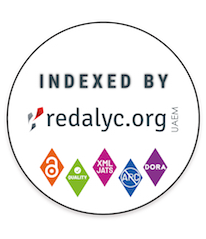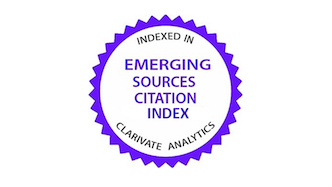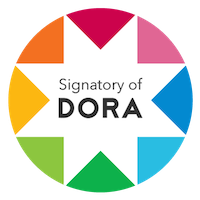Structure and impact of taxonomic diversity on cocoa of Soconusco, Chiapas, México
DOI:
https://doi.org/10.15517/am.v30i2.34032Keywords:
agroforestry system, family, tree, inventoryAbstract
Introduction. The cultivation of cocoa in Mexico is an exportable item that guarantees the subsistence of thousand families. The state of Chiapas is one of the most important producers; however, even the yields are low due to different factors. These can be minimized with appropriate agroforestry design that responds to the requirements of the crop. Objective. The objective of this work was to evaluate the structure of taxonomic diversity in cocoa plantations, and analyze its influence on the crop in Soconusco, Chiapas, Mexico. Materials and methods. The research was carried out from January to May 2018 in thirteen municipalities: Cacahoatán, Tuxtla Chico, Frontera Hidalgo, Metapa, Suchiate, Tapachula, Huixtla, Tuzantán, Huehuetán, Escuintla, Acacoyagua, Acapetagua and Mapastepec. Representative plots of 50x20 m were established, in which the present species were counted and classified taxonomically. The diameter at chest height (DAP) and total height (Ht) were evaluated. An analysis was made to define the strata (lower, middle and upper) in the vertical structure of the agroforestry system, and considerations were made about the influence of the results on the cocoa. Results. 35 tree species were determined with 199 plants belonging to twenty-two families. The most important species were Cordia alliodora, Tabebuia rosea and Pouteria sapota. Conclusion. The shade tree species registered in the vertical and horizontal structure of the agroforestry cocoa systems of the Soconusco region, Chiapas, generated an excess of shade equivalent to an average in the region of 14.16 % of the total illumination, and the consequent competition for light among the species studied, including cocoa cultivation.
Downloads
References
Almeida, A.Y., and R. Valle. 2007. Ecophysiology of the cocoa tree. Braz. J. Plant Phys. 19:425-448. doi:10.1590/S1677-
Alvim, T. 1977. Cacao. In: P.T. Alvin, and T.T. Kozlowski, editors, Ecophysiology of tropical crops. Academic Press, NY, USA. p. 279-313.
Alvim, T., M.A. Dantas, and F. Vello. 1974. Physiological responses of cacao to environmental factors. Rev. Theobroma 4:3-25.
ANECACAO (Asociación Nacional de Exportadores de Cacao). 2015. Distancia de siembra. ANECACAO, ECU. http://www.anecacao.com/es/servicios/articulos-tecnicos/distancia-de-siembra.html (consultado 10 jul. 2018).
Avendaño, A.C.H., J.M. Villareal, R.E. Campos, R.A. Gallardo, L.A. Mendoza, J.F. Aguirre, A. Sandoval, y S. Espinosa. 2011. Diagnóstico de cacao en México. Universidad Autónoma Chapingo, Texcoco, MEX.
Barrance, A., J. Beer, O.H. Boshier, J. Chamberlain, J. Cordero, G. Detlefsen, B. Finegan, G. Galloway, M. Gómez, J. Gordon, M. Hands, J. Hellin, C. Hughes, M. Ibrahim, R. Leakey, F. Mesén, M. Montero, C. Rivas, E. Somarriba, y J. Stewart. 2003. Árboles de Centroamérica: Un manual para extensionistas. Oxford Forestry Institute, y CATIE, Turrialba, CRI.
Barros, O. 1977. Investigaciones sobre el hongo Monilia roreri Cif. and Par., causante de la pudrición acuosa de la mazorca del cacao; sus daños y su control. Cacaotero Colomb. 3:42-52.
Beer, J., M. Ibrahim, E. Somarriba, A. Barrance, y R. Leakey. 2003. Establecimiento y manejo de árboles en sistemas agroforestales. Oxford Forestry Institut, y CATIE, Turrialba, CRI.
CNA (Comisión Nacional del Agua). 1998. Datos meteorológicos del municipio de Tapachula, Chiapas. CNA, MEX.
Curtis, J.T., and R.P. Mcintosh. 1951. An upland forest continuum in the prairie-forest border region of Wisconsin. Ecology 32:476-496. doi:10.2307/1931725
García, E. 1973. Modificaciones del sistema de clasificación climática de Köppen para adaptarlo a las condiciones de la República Mexicana. Universidad Nacional Autónoma de México, Ciudad de México, MEX.
González, F. 2008. Ecofisiología del cacao. Blogspot. http://diplomado2007unas.blogspot.com/2008/01/ecofisiologia-del-cacao.html (consultado 20 may. 2018).
González, J., O. Rodríguez, J. De-La-Cruz, y J. Almonte. 2015. Evaluación de tres densidades de plantación de cacao y dos arquitecturas provenientes de reproducción asexual. Rev. APF 4(2):7-12.
Hernández, E., J. Hernández, C.H. Avendaño., G. López, E.R. Garrido, J. Romero, y C. Nava. 2015. Factores socioeconómicos y parasitológicos que limitan la producción del cacao en Chiapas, México. Rev. Mex. Parasitol. 33:232-246.
IUSS (International Union of Soil Science). 2008. Base referencial mundial del recurso suelo. Informes sobre recursos mundiales de suelos 103. FAO, Roma, ITA.
Jaimez, R.E., W. Tezara, I. Coronel, y R. Urich. 2008. Ecofisiología del cacao (Theobroma cacao L.): su manejo en el sistema agroforestal. Sugerencia para su mejoramiento en Venezuela. Rev. For. Venezol. 52:253-258.
López, O., A. Sandoval, y J. Soto. 1988. Sistemas de producción de cacao (Theobroma cacao L.) en la región del Soconusco, Chiapas, México. Secretaría de Agricultura y Recursos Hidráulicos, Ciudad de México, MEX.
Pennington, T.D., y J. Sarukhán. 2005. Árboles tropicales de México: manual para la identificación de las principales especies. Universidad Nacional Autónoma de México, Ciudad de México, MEX.
Ramírez, A., E. García, J.J. Obrador, O. Ruiz, y W. Camacho. 2013. Diversidad florística en plantaciones agroforestales de cacao en Cárdenas, Tabasco, México. Univ. Cienc. 29:215-230.
Roa, H.A., M.G. Salgado, y J. Álvarez. 2009. Análisis de la estructura arbórea del sistema agroforestal de cacao (Theobroma cacao L.) en el Soconusco, Chiapas - México. Acta Biol. Colomb. 14(3):97-110.
Salgado-Mora, M.G., G. Ibarra, J.E. Macías-Sámano, y O. López-Báez. 2007. Diversidad arbórea en cacaotales del Soconusco, Chiapas, México. Interciencia 32:763-768.
Sánchez, F., J. Pérez, O. Obrador, J. José, A. Sol, y O. Ruiz. 2016. Árboles maderables en el sistema agroforestal de cacao en Cárdenas, Tabasco, México. Rev. Mex. Cienc. Agríc. 14:2711-2723. doi:10.29312/remexca.v0i14.440.
SIAP (Servicio de Información Agroalimentaria y Pesquera). 2018. Intención de cosecha de cultivos perennes por estado en México 2018. SIAP, MEX. http://infosiap.siap.gob.mx/opt/agricultura/intension/Intencion_cosechaPerenne_estado2018.pdf (consultado 24 abr. 2018).
Silva, C., L. Orozco, M. Rayment, y E. Somarriba. 2013. Conocimiento local sobre los atributos deseables de los árboles y el manejo del dosel de sombra en los cacaotales de Waslala, Nicaragua. Agrofor. Am. 49:51-60.
Somarriba, E. 2002. Estimación visual de la sombra en cacaotales y cafetales. Agrofor. Am. 9(35-36):86-94.
Somarriba, E. 2004. ¿Cómo evaluar y mejorar el dosel de sombra en cacaotales? Agrofor. Am. 41-42:122-130.
Somarriba, E., C. Harvey, M. Samper, F. Anthony, J. Gonzalez; C. Stracer, and R. Rice. 2004. Conservation of biodiversity in neotropical coffee (Coffea arabica) plantations. In: G. Schroth et al., editors, Agroforestry and boidiversity conservation in tropical landscapes. Island Press, WA, USA. p. 198-226.
Somarriba, E., y F. Quesada. 2005. El diseño y manejo de la sombra en el cacaotal. CATIE, Turrialba, CRI.
Schroth, G., U. Krauss, L. Gasparotto, J.A. Duarte, and K. Vohland. 2000. Pest and diseases in agroforestry systems of the humid tropics. Agroforest. Syst. 50:199-241. doi:10.1023/A:1006468103914

Downloads
Additional Files
Published
How to Cite
Issue
Section
License
1. Proposed policy for open access journals
Authors who publish in this journal accept the following conditions:
a. Authors retain the copyright and assign to the journal the right to the first publication, with the work registered under the attribution, non-commercial and no-derivative license from Creative Commons, which allows third parties to use what has been published as long as they mention the authorship of the work and upon first publication in this journal, the work may not be used for commercial purposes and the publications may not be used to remix, transform or create another work.
b. Authors may enter into additional independent contractual arrangements for the non-exclusive distribution of the version of the article published in this journal (e.g., including it in an institutional repository or publishing it in a book) provided that they clearly indicate that the work was first published in this journal.
c. Authors are permitted and encouraged to publish their work on the Internet (e.g. on institutional or personal pages) before and during the review and publication process, as it may lead to productive exchanges and faster and wider dissemination of published work (see The Effect of Open Access).



























